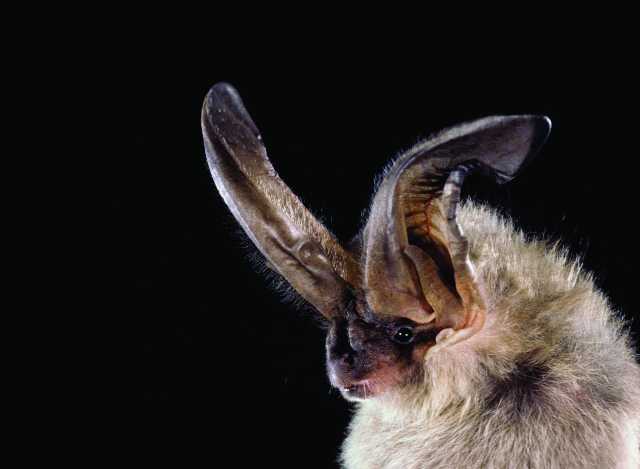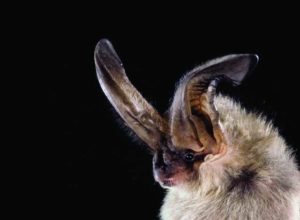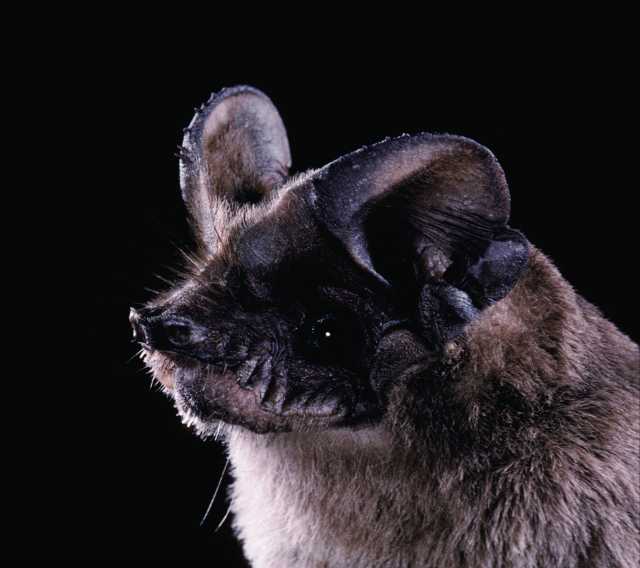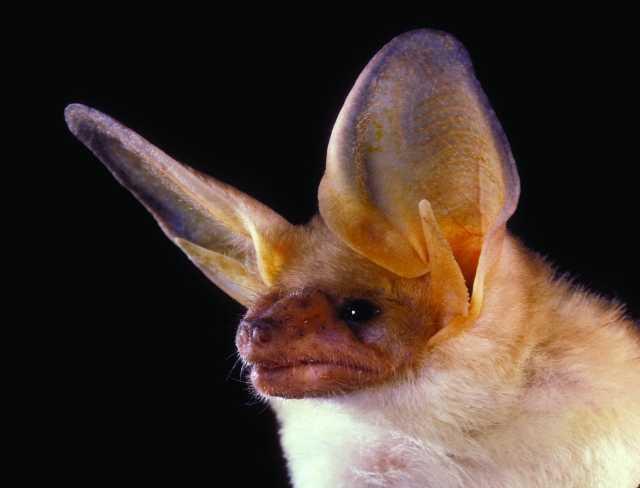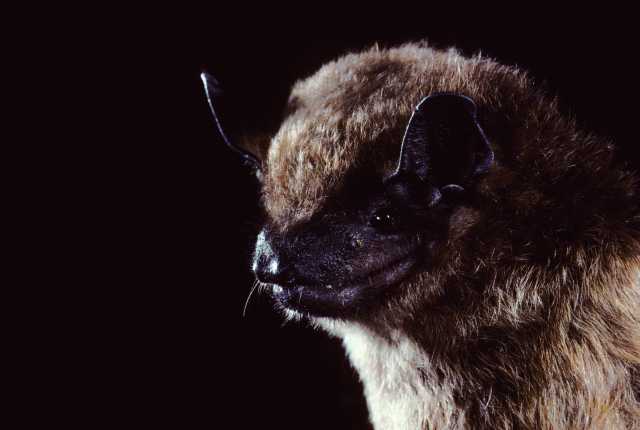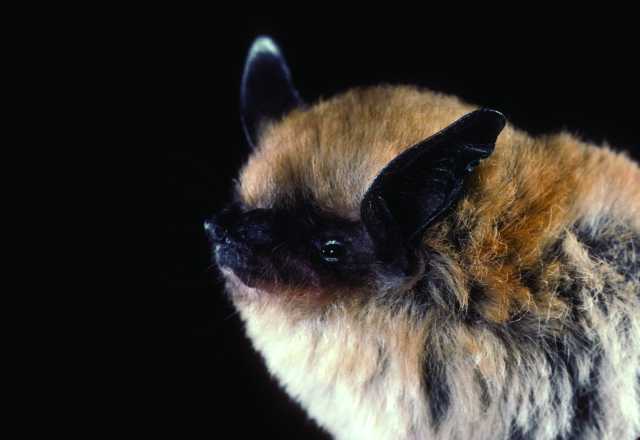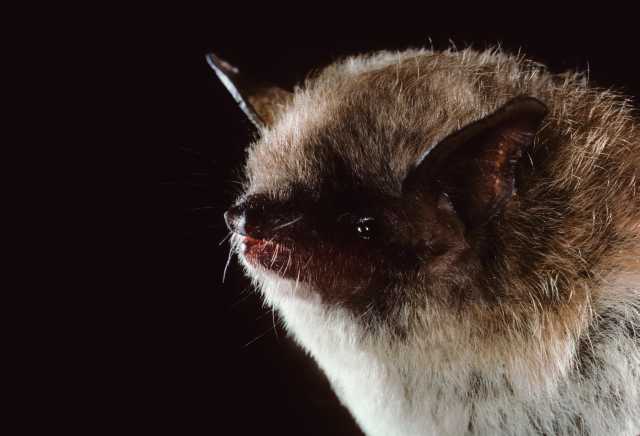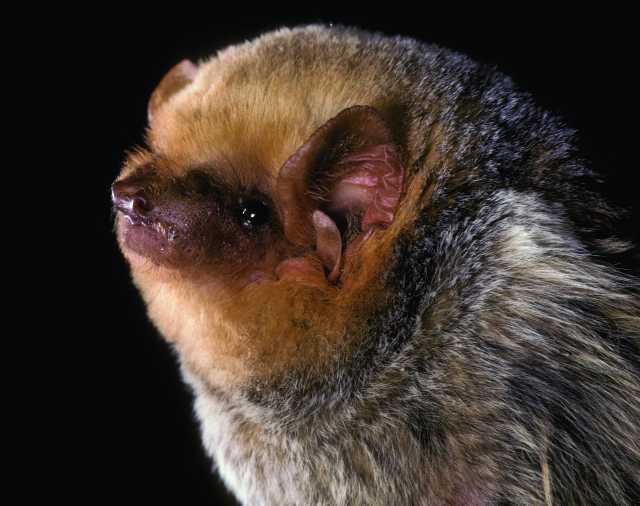Townsend’s Big-Eared Bat (Corynorhinus townsendii, formerly Plecotus townsendii)
Description: Body length about 3.5-4.6″, with a 12-13″ wingspan. Pale to black fur with paler belly. Huge ears (over an inch long). Two lumps on either side of nose.
Range: Western North America. Hibernates in caves and mines near entrances.
Habitat: Forested and open (edge) habitat. Roosts from ceiling frequently hanging by one foot.
Diet: Emerge an hour after sunset. Eats mostly moths, but also eats lacewings, dung beetles, flies and sawflies.
Behavior: Flight can go from swift to hovering. One pup is born and able to fly at two and a half to three weeks. May lose half of the body mass during normal over-winter hibernation. Life span 16 years or more.
Risks: Habitat loss, vandalism, renewed mining and increased disturbance by cavers in maternity and roost colonies have reduced the numbers of this gentle bat. When roost is disturbed, they may abandon it permanently. Disturbance during hibernation leads to burning energy in an attempt to escape and they may not have enough fat storage left to survive the winter. Species of Special Concern in California.
Interesting Facts: Researchers have found that the echolocating calls of this bat are 20 to 45 decibels quieter than those of other aerial-hawing (aerial-hunting) bat species. As a result, moths are less likely to take evasive action as the bat draws near. Tests showed that Corynorhinus townsendii had 31% higher capture success against moths overall and 52% higher capture success against the sonar-jamming moth Bertholdia trigon. The downside to this is reduced prey detection distance.

